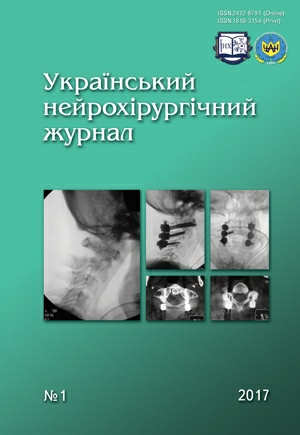Abducens nerve palsy after percutaneous radiofrequency ablation of trigeminal ganglion
DOI:
https://doi.org/10.25305/unj.96112Keywords:
trigeminal neuralgia, radiofrequency ablation, abducens nerveAbstract
The paper deals with a case report about abducens nerve dysfunction after radiofrequency ablation of trigeminal ganglion in a female patient suffering from trigeminal neuralgia. The complication manifested with conjugate gaze palsy and occurred immediately after the procedure. Neurologic deficit resolved spontaneously in 4 months. Perifocal radiofrequency exposure and anatomical features of the patient caused this incident. Motor controlling oculomotor nerves functioning in the phase of testing can help to avoid such complications.
References
1. Jin HS, Shin JY, Kim YC, Lee SC, Choi EJ, Lee PB, Moon JY. Predictive factors associated with success and failure for radiofrequency thermocoagulation in patients with trigeminal neuralgia. Pain Physician. 2015(18):537-45. [PubMed]
2. Chatterjee N, Chatterjee S, Roy C. Abducens nerve palsy after percutaneous radiofrequency ablation of gasserian ganglion. J Neurosurg Anest. 2014;26(1): 89–90. [CrossRef] [PubMed]
3. Emril DR, Ho KY. Treatment of trigeminal neuralgia: role of radiofrequency ablation. Journal of Pain Research. 2010(3):249–254. [CrossRef] [PubMed]
4. Gauci CA, Jankowiak B. Manual of RF techniques: a practical manual of radiofrequency procedures in chronic pain management. Meggen: FlivoPress, 2004.
Downloads
Published
How to Cite
Issue
Section
License
Copyright (c) 2017 Borys B. Pavlov

This work is licensed under a Creative Commons Attribution 4.0 International License.
Ukrainian Neurosurgical Journal abides by the CREATIVE COMMONS copyright rights and permissions for open access journals.
Authors, who are published in this Journal, agree to the following conditions:
1. The authors reserve the right to authorship of the work and pass the first publication right of this work to the Journal under the terms of Creative Commons Attribution License, which allows others to freely distribute the published research with the obligatory reference to the authors of the original work and the first publication of the work in this Journal.
2. The authors have the right to conclude separate supplement agreements that relate to non-exclusive work distribution in the form of which it has been published by the Journal (for example, to upload the work to the online storage of the Journal or publish it as part of a monograph), provided that the reference to the first publication of the work in this Journal is included.









